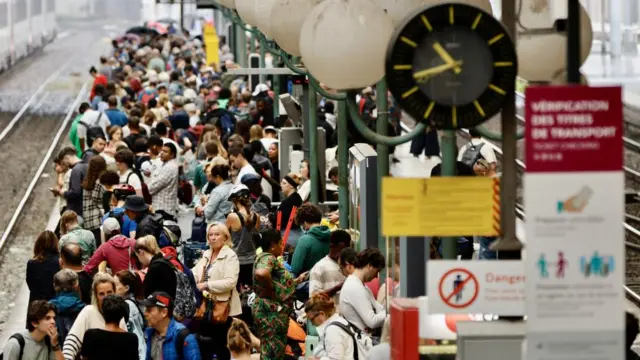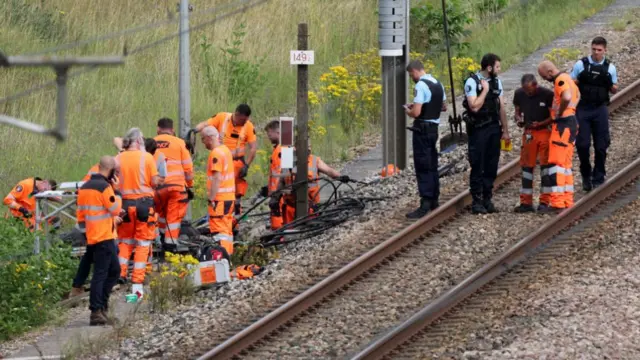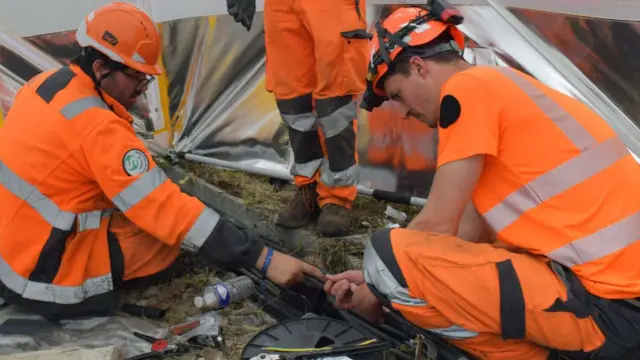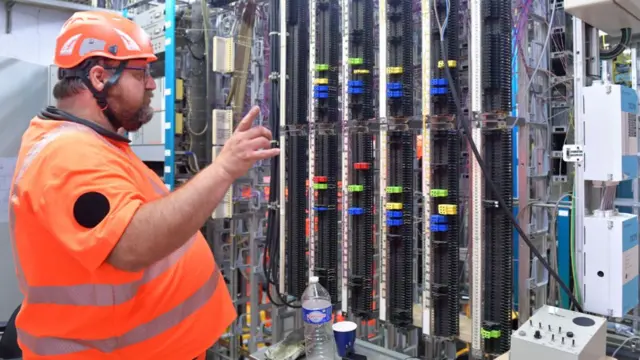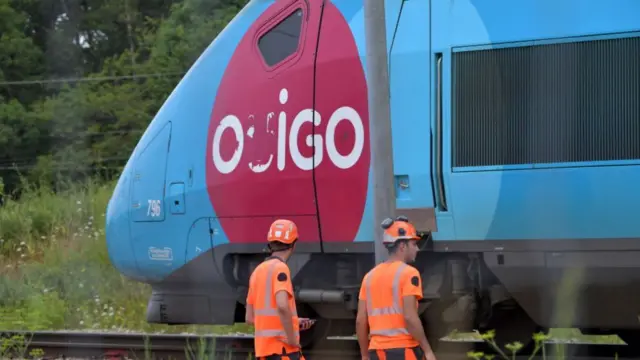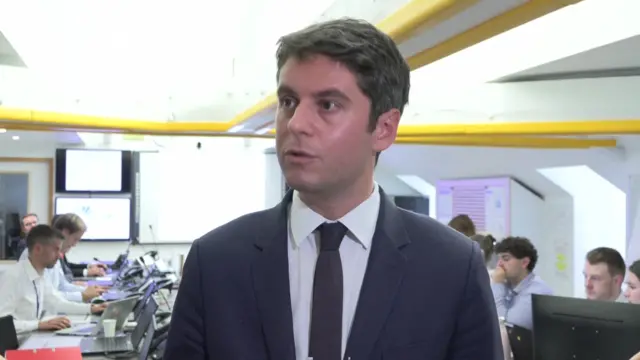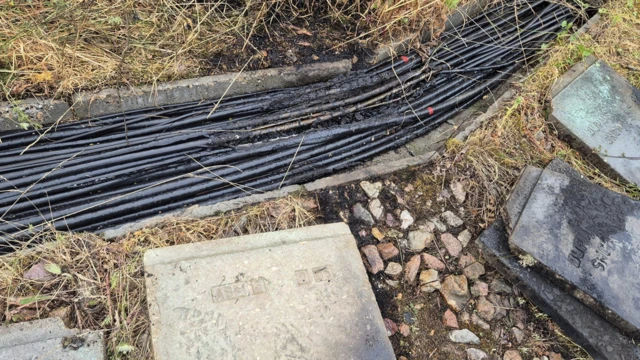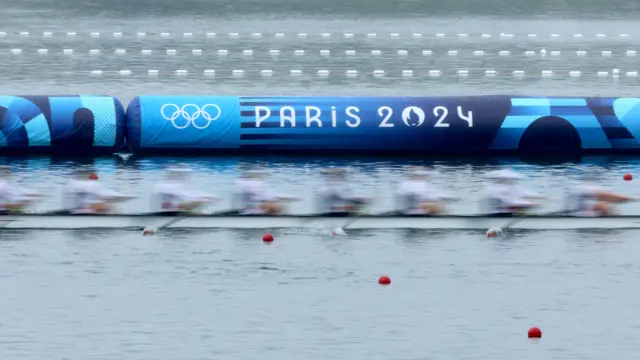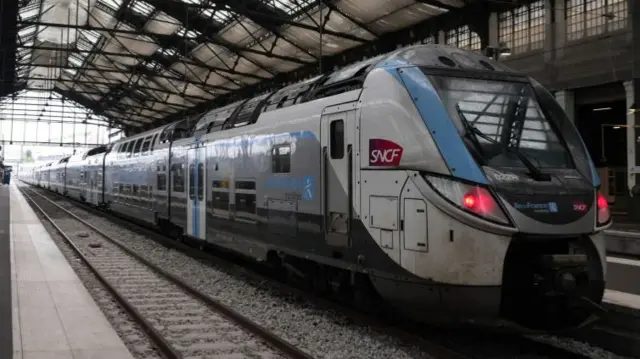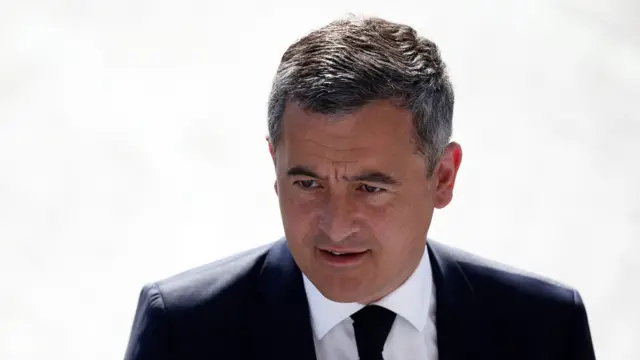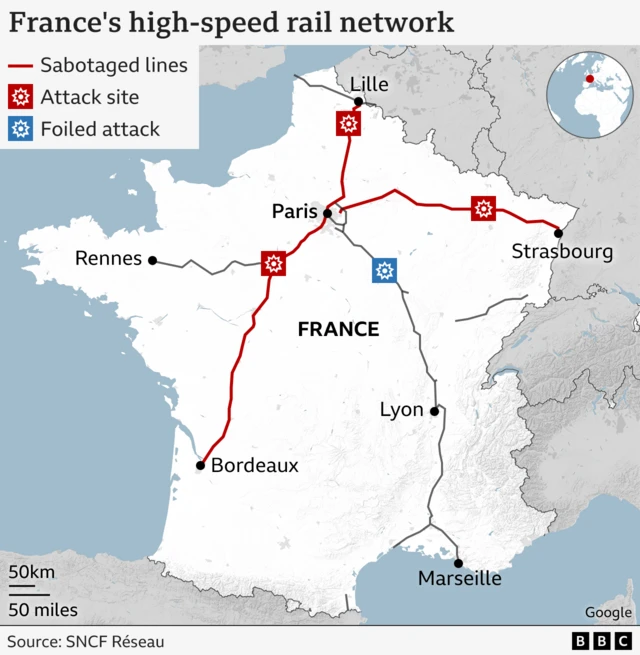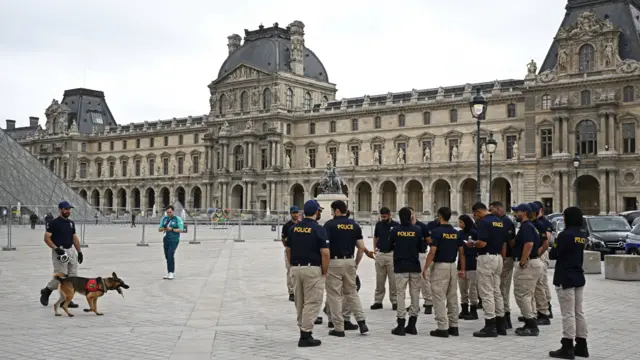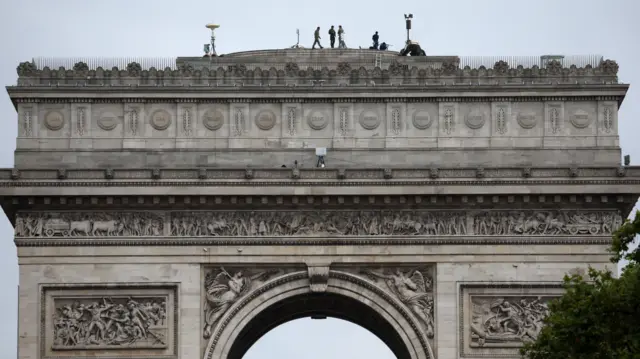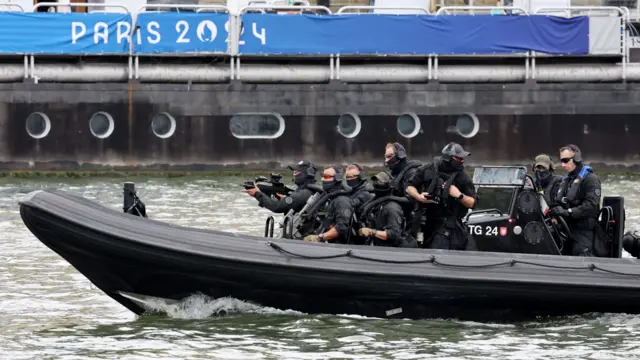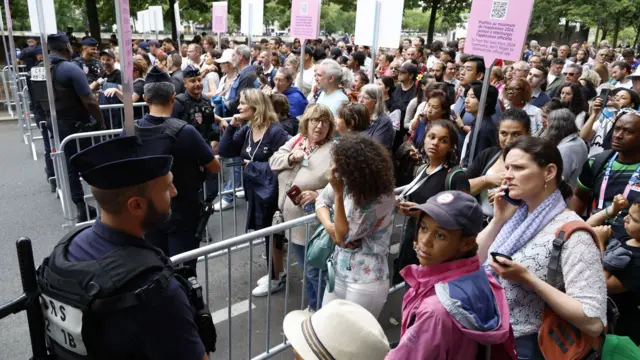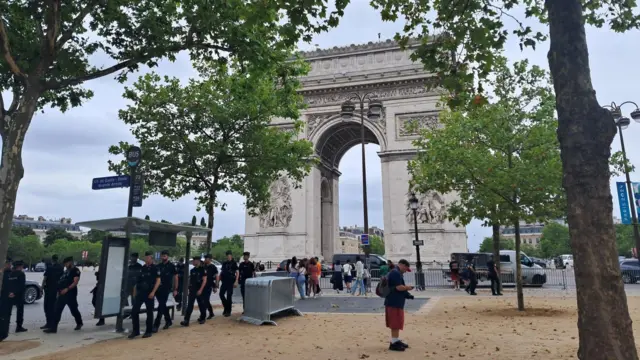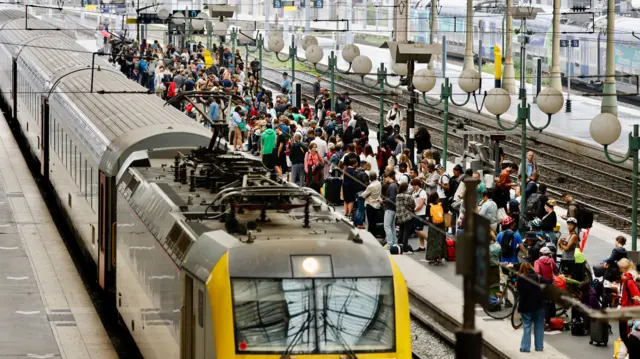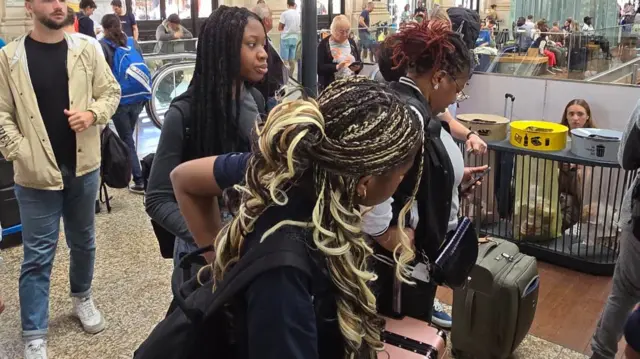Saboteurs struck vital but vulnerable points of high-speed networkpublished at 18:05 BST 26 July 2024
 Paul Kirby
Paul Kirby
Europe digital editor
Pre-planned and co-ordinated, these acts of sabotage were clearly aimed at bringing the four arteries of the TGV network out from Paris to the rest of the country to a standstill.
To a large degree they succeeded. Only the southern route to Lyon and Marseille was spared, mainly because SNCF workers were able to foil the attack at the last minute.
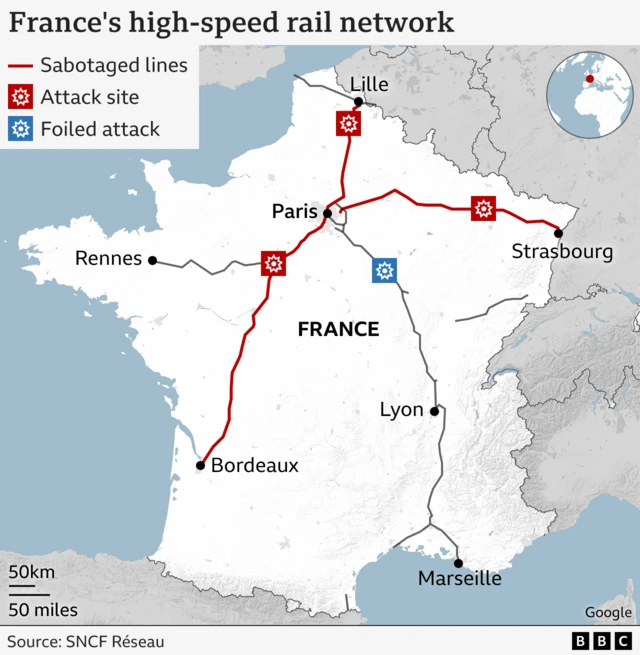
France's high-speed TGV trains criss-cross the country at 300km/h (186mph), and the network is largely rural which makes its infrastructure more vulnerable.
Caretaker Prime Minister Gabriel Attal went so far as to call the sites targeted as "nerve centres".
The head of state-owned rail company SNCF, Jean-Pierre Farandou, said whoever was behind the sabotage had targeted intersections on the network to have the most serious impact "since each fire cut off two lines" and damaged critical signalling cables.
To the south-east of Paris, at Courtalain, the saboteurs targeted cables close to an intersection on the so-called Atlantic line, with routes heading towards Brittany on one side and the south-west of France on the other.
In the east, they set fire to cables near a fork in the high-speed line heading either to Metz or Strasbourg.
And with that, we are ending our live coverage of the arson attacks in France - but you can hop over to our live commentary of tonight's Olympic opening ceremony in Paris.
Thank you for joining us.
